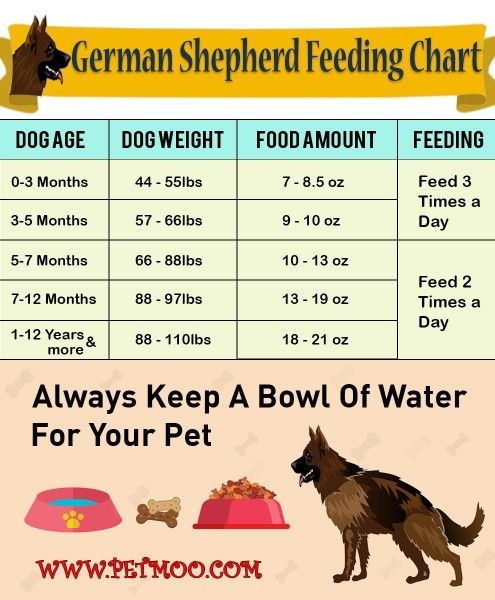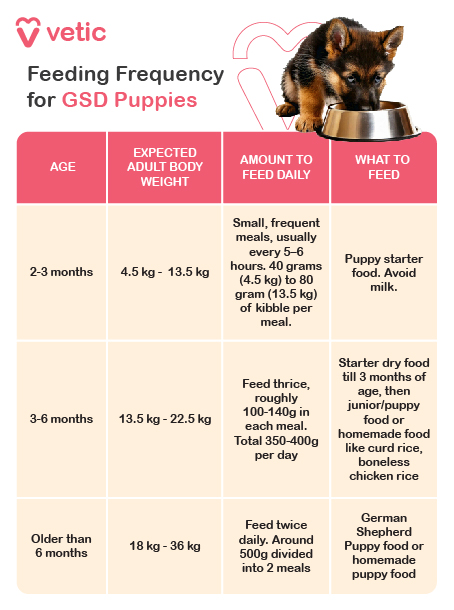Alright, let’s talk about feeding a German Shepherd puppy. When I first brought my little guy home, a bundle of fluff and teeth, one of the first big questions was, naturally, how much food does this whirlwind need? You look at them, so small, but you know they’re gonna get big, fast. It felt kinda overwhelming at first.
Starting Out Small
I remember the breeder gave me a small bag of the kibble he was already on and some rough guidelines. The vet chimed in too. The main thing everyone stressed was small, frequent meals. Puppies have tiny stomachs but need a ton of energy to grow. So, for the first few weeks, maybe from 8 weeks to around 3 months old, I was basically dishing out food what felt like constantly.

- I started with maybe just over a cup of dry puppy food total for the day.
- But here’s the kicker: I split that into like 4 or even 5 tiny meals spread throughout the day. First thing in the morning, lunchtime, mid-afternoon, dinner, and sometimes a little snack before bed.
- I didn’t just follow the bag blindly. I watched him. Was he finishing his food eagerly? Did he seem hungry again quickly? How were his poops? (Yeah, you become a poop-inspector, it’s part of the job!) Solid poops generally meant things were okay digestively.
I kind of used a rough guide I’d seen somewhere, something about grams per kilo of body weight. When he was tiny, say 5 kilos, I aimed roughly for something like 100 grams total for the day, adjusting based on how he looked and acted. It was more of a starting guess than a hard rule.
The Growth Spurt Phase
Then came the rapid growth phase, maybe from 3 to 6 months. Wow, they shoot up fast! It felt like I blinked and he was bigger. This is where I really had to pay attention and adjust the food intake.
Keeping up was key. As he got heavier, naturally, he needed more fuel. I gradually increased the total amount of food. We probably moved up towards 2, then maybe closer to 3 cups a day during this time. I also started cutting down the meal frequency. Instead of 4-5 meals, we went down to 3 solid meals a day – breakfast, lunch, dinner.
I specifically remember checking his ribs. The advice I got was you should be able to feel them easily without pressing too hard, but not see them sticking out prominently. If he felt too bony, I’d up the food slightly for a week or so and see how he did. If he started looking a bit too chunky (which can be bad for their joints, especially in GSDs), I’d dial it back a tiny bit. It was a constant process of observing and tweaking.
Settling Into a Routine (6+ Months)
As my pup got older, heading towards that 6-month mark and beyond, his growth rate started to slow down a bit, though he was still filling out. This is when I transitioned him down to two meals a day – morning and evening. It just fit better with our schedule, and his digestive system was mature enough to handle larger meals less frequently.
The total amount of food sort of stabilized depending on his activity level. On days we went for extra long walks or had heavy play sessions, he might seem hungrier. On lazier days, maybe not so much. An adult GSD, depending on weight and energy, might land somewhere between 2 to 3.5 cups a day, split between those two meals. My guy, once he was pretty much grown, hovered around the 3-cup mark, give or take, divided into two servings.
The main thing I learned? There isn’t one single magic number. Those charts on the food bags, the online guides – they’re just starting points. You really have to look at your specific puppy. Their energy level, their metabolism, their overall condition – it all plays a part. Keep an eye on their weight, check those ribs, watch their energy, and adjust as you go. It’s more art than science sometimes, just paying attention to your dog. That’s been my practical experience, anyway. It’s an ongoing dialogue with your growing buddy.






